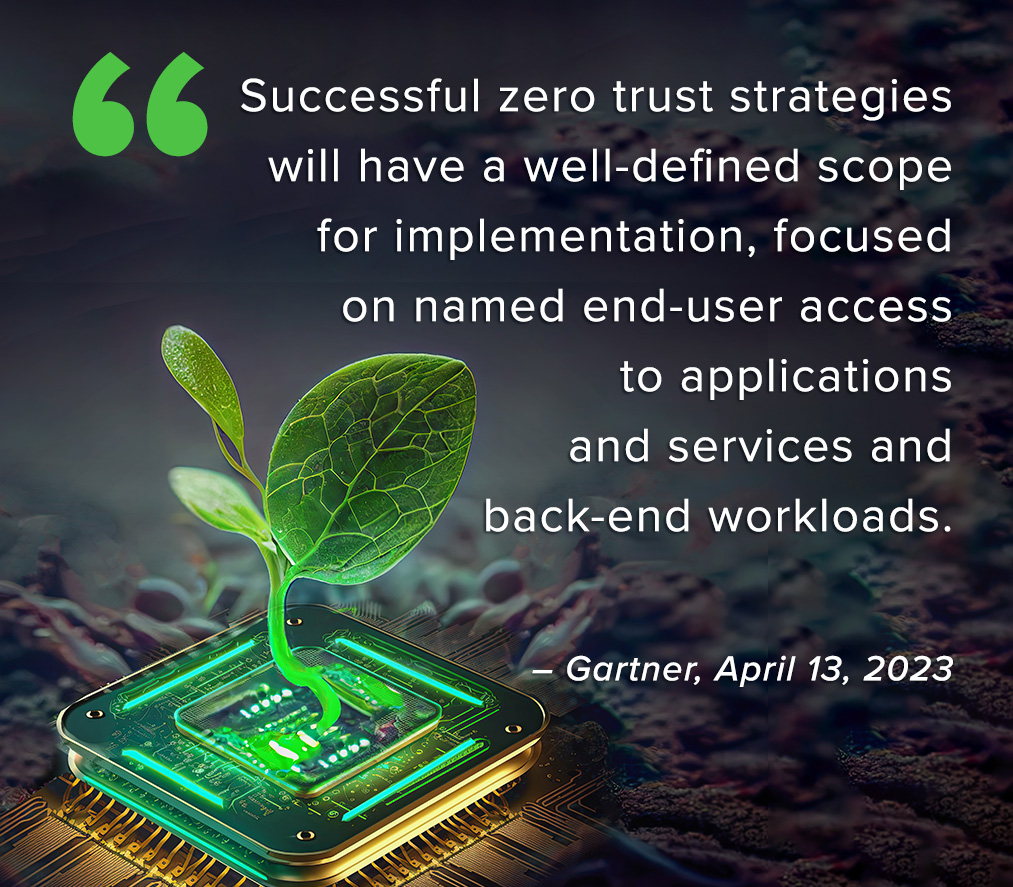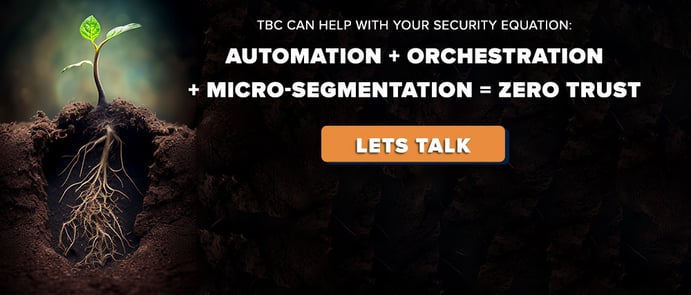
Zero Trust is not just a not just box to click on your compliance checklist. Instead, Zero Trust is a strategy that applies a set of security principles for end-to-end protection of your IT infrastructure—from applications to networks to firewalls. And due to the vastly different IT environments of organizations, no single Zero Trust solution meets everyone’s needs.
IT environments are complex, living organisms with constant fluctuations of input and output, cross-channel communication, dependencies, different security policies, and shifting users and workloads. Zero Trust assumes that something nefarious will always attempt, or may have already gained, access to your inner IT functionality.
Zero Trust
Zero Trust architecture constantly evaluates trustworthiness and endlessly validates devices, users, and their roles and permissions to ensure nothing becomes compromised. But Zero Trust is not isolated from other functionalities—it is a security policy that works in conjunction with micro-segmentation, automation, and orchestration to strengthen the security posture of businesses.
The U.S. Department of Defense (DOD) has implemented its own Zero Trust Model that puts equal focus on each of these components to improve their risk profile:
- User
- Devices
- Applications & Data
- Data
- Network
- Visibility & Analytics
- Automation & Orchestration
When the DOD decides to implement Zero Trust, shouldn't the rest of us? It matters less which Zero Trust framework you follow and more that it outlines a program for constant vigilance with a proactive and defensive mindset to repel all threats, whether from within or without, with the same vigor. But you'll need the operational maturity to filter the noise of alerts to react appropriately to threats and to remediate incidents that have the potential to impact your environment.

If you don't have a SOC or NOC available in-house to address critical operational issues, work with a Solutions Provider to get the full benefit of 24/7/365 eyes on your systems with the ability to ingest threat intelligence and close vulnerability gaps.
Visibility & Analytics
Remote work and constant high-profile ransomware attacks have shown us that we must change how we protect our IT infrastructure. We can't focus solely on threats from the outside anymore. We need to control all contact vectors.
A Zero Trust strategy allows organizations to work towards security maturity by verifying the identity of users, devices, or applications at every contact point in their system because the intersections are captured and analyzed for behavior patterns making it easier to see if malware is moving through your systems and contain it.
Deploying an analytics tool like Splunk brings visibility to your systems. It enables IT teams to monitor data in real-time to detect threats and improve responsiveness to mature defensive tactics. Splunk will deliver detailed reporting identifying who is accessing company resources and how they are interacting with data and applications. From there, it makes it easier to track users' behavior patterns and identify suspicious activity.
Automation & Orchestration
Manual triage processes are time-consuming, prone to human error, and can’t keep up with attack volumes. Cue automation and orchestration to gain speed and accuracy to secure the movement of applications and workflows between users. More segmentation and closer observation of your environment will trigger more alerts, making automation critical to alleviating the burden on your IT teams.
Automation means completing single tasks without human interaction. Orchestration is the complex compilation of all the input from the automated tasks to complete a workflow process. When you add automation and orchestration to your IT portfolio, you can optimize your resources and eliminate most manual processes. Automation and orchestration serve to build speed and reliability into your systems, minimizing friction and increasing productivity. But where does Zero Trust come in?
With automation and orchestration, organizations can ensure continuous delivery of products and services—but those processes need to be wrapped in a blanket of security. A Zero Trust strategy is the security blanket that ensures governance and compliance within the IT infrastructure and organizational culture.
Security leaders know a Zero Trust policy is not built in a vacuum. The threat of ransomware is a clear and present danger. 70% of organizations fell victim to an attack last year, but 70% of businesses didn’t fail—so how did they survive? Cybersecurity insurance? Yes. Immutable data backups? Yes. xTDR to both hunt for and destroy threats? Yes.
But successful organizations also need to create a culture of security, clearly defined identity controls, and increase their capacity to address impactful incidents by automating threat investigations.
Micro-segmentation
Micro-segmentation software and services are about keeping identity management controls, visibility, compliance, and security policies extended over your data, cloud, on-premise, and hybrid environments. Networks have long been segmented for critical stopgaps to contain malware and keep it from spreading through an entire network infrastructure. But micro-segmentation offers layered defense for the whole IT environment.
Micro-segmentation goes beyond the network alone and can help secure your entire environment and reduce the blast radius of breaches. Segmenting each element and restricting access to trusted users, devices, applications, and data makes it far easier to contain and eliminate threats.
Micro-segmentation allows IT teams to minimize the attack surface with defined perimeters and access controls to restrict the movement of threats laterally within your systems. Micro-segmentation is more of a process than an isolated tool. Instead of blanket security controls, micro-segmentation manages individualized controls per workload or application. This methodology is more precise and makes it easier to contain breaches and remediate attacks because the entire network or server is not reliant on one security control that may fail.
Endpoint security needs to be improved. Yes, all traffic that crosses your perimeter must be monitored and inspected – but often, the threat source has already infiltrated the exterior and must be discovered and contained on the interior. Micro-segmentation gives greater visibility into traffic – providing another layer of protection against data exfiltration from unknown users.
Risk Management with TBC
Implementing a Zero Trust strategy builds value across your entire business. If you don’t know where to start or how to get your Executive leadership and IT teams to see the criticality of Zero Trust, TBC can help. TBC is a Solutions Provider with over 26 years of managed service experience, assisting clients to become more efficient, secure, and focused on revenue-driven projects.
At TBC, our Cybersecurity team collaborates closely with our Network, Infrastructure, Backup & Data Services, Cloud, and Compliance teams to deliver a unified Zero Trust strategy that manages your risk according to your risk profile. TBC treats your IT systems as a whole ecosystem and understands how each IT component is essential to the health and functionality of your business. Work with TBC to secure and transform your digital enterprise.
.png)


